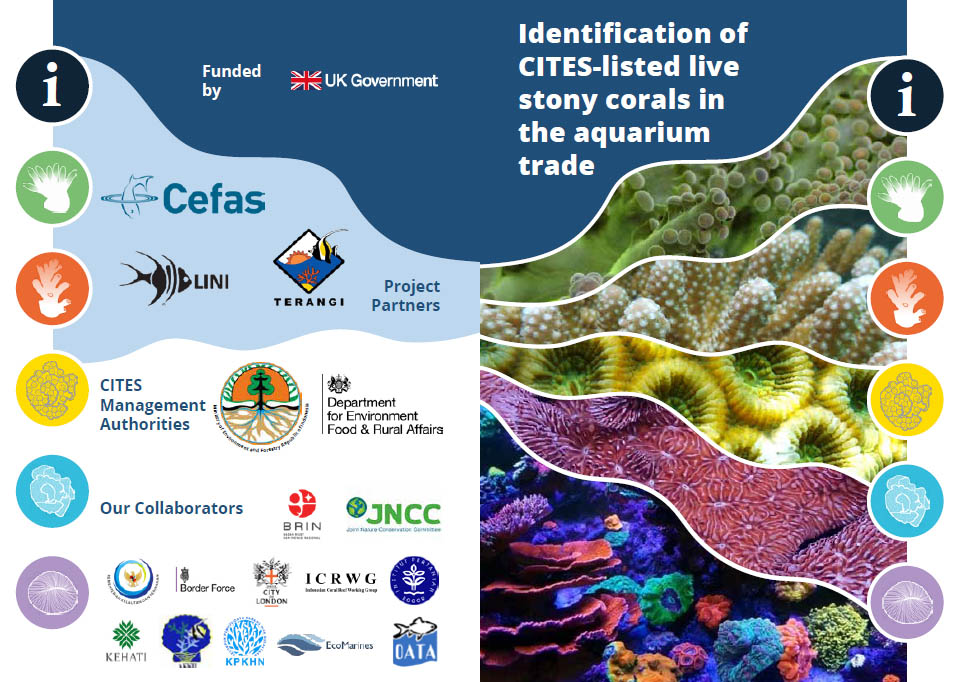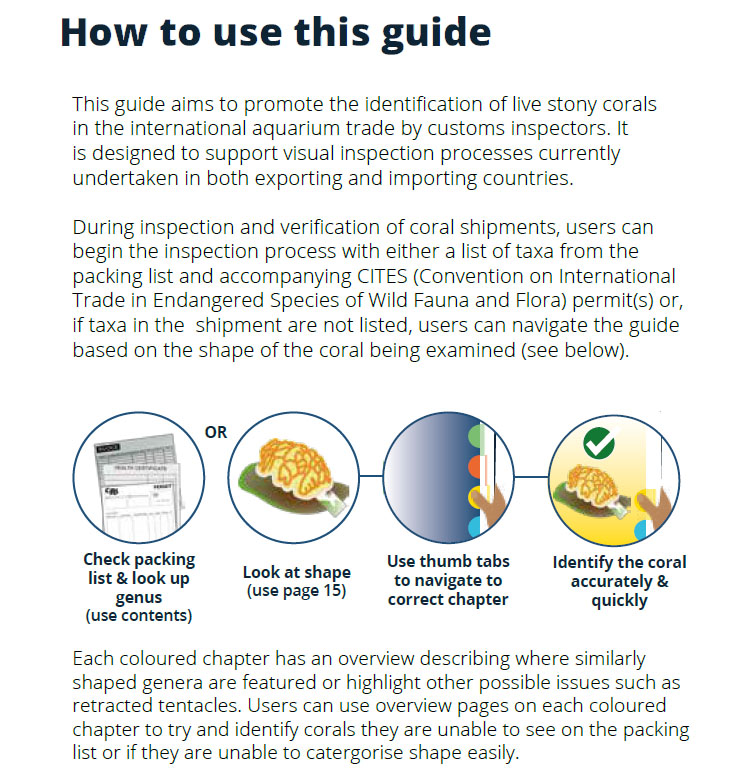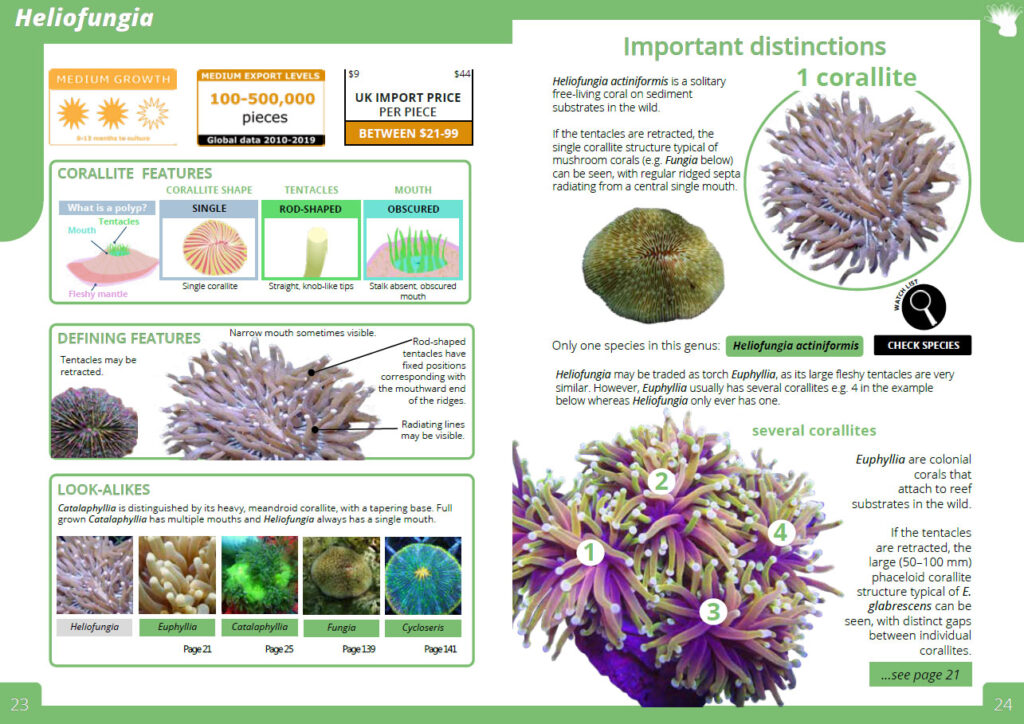
via Ornamental Aquatic Trade Association (OATA)
OATA was very pleased to help with the creation of a new stony coral ID guide which is available to customs inspectors around the world. The guide was funded by the UK Government.
The Identification of CITES-listed live stony corals in the aquarium trade guide was formally launched by Defra at the CITES CoP meeting and is the product of a research project led by the Centre for Environment, Fisheries, and Aquaculture Science (Cefas) who worked with The Indonesian Coral Reef Foundation (TERANGI) and The Indonesian Nature Foundation (Yayasan Alam Indonesia Lestari – LINI) to produce the guide.
Indonesia is the world’s largest exporter of live coral which is why Cefas chose to work with these two partners on the guide. According to JNCC, stony corals are one of the most traded CITES-listed marine animals globally, and in the UK more than 75% of direct CITES imports were in live and raw coral.
The original idea for the guide grew from a discussion between Cefas, the Joint Nature Conservation Committee (JNCC) and OATA about the need for a visual resource to differentiate stony corals originating from a wild-collected or mariculture source. Development of the guide was made possible with funding from the Department for Environment, Food and Rural Affairs (Defra).
The resulting 147-page full-color guide is a deep dive into what custom officials should be looking for when they inspect CITES corals consignments to help them identify illegal imports, and includes detailed images and descriptions of 55 stony coral genera.

“Several years ago, OATA created a very simple document on the differences between wild and maricultured corals for the EU to use. But we knew that a much more in-depth guide was needed to help Border inspectors. We were therefore very pleased that Cefas and JNCC took up the challenge and they have produced a very comprehensive and impressive piece of work – it certainly far surpasses our document,” said OATA CEO Dominic Whitmee.
“We know our members who import and sell coral will be very pleased with this because illegal imports taint everyone in our industry. We’d also, therefore, urge anyone who sells corals to have a look at the guide to ensure they are not inadvertently selling illegal coral.
“I also have to commend all the people and organizations involved, and in particular pay tribute to OATA member EcoMarines and Laura Carlin who used her extensive knowledge to contribute to the guide. As her business name suggests, Laura is passionate about coral sustainability and I know she spent a lot of time helping to get the guide right.”

EcoMarines’ Laura Carlin said: “I got involved with this project because I felt there was a real lack of guidance available for officials at Border Control Posts. The huge volume of corals coming into the UK puts a lot of pressure on inspectors and this guide is exactly the kind of thing they need to be able to quickly identify species, quality of mariculture, and any ill-intended imports.
“Unfortunately in the past unscrupulous individuals have on occasion abused the system and as an industry we want this kind of business nipped in the bud at the point of import. This guide will do just that and can be used at any customs post throughout the world. It is going to be an extremely valuable tool and I’m very proud to have helped in its design.”
Dr. Joanna Murray from Cefas said: “The production of this guide was a huge team effort between the project partners and a long list of collaborators, including industry and inspecting staff in both the UK and Indonesia. We wanted to develop an identification resource for live stony corals that was easy and quick to use by non-specialists at the border and ensure that it was designed specifically for corals in trade which often look different from those in the wild. We have had a fantastic reception to the launch of the guide and will be providing physical copies to requesting countries whose staff are required to inspect corals in trade.”
More about the Cefas/JNCC launch can be found here and the guide can be downloaded here.
###
Download a mirrored copy of the CITES Coral ID Guide (2022) from the Reef2Rainforest.com servers – OGL 3.0




